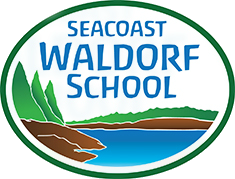The Head and the Heart: Why Science and Art Should Work Together
The magazine the Grist recently published an article about the connection between science and art. It discusses the role art serves in not only in helping to communicate complex problems, but in bringing creative approaches to solving those complex problems. At Seacoast Waldorf School art features prominently in our approach to academics, especially the sciences. Our curriculum uses the block system, where students focus on one particular subject every morning for 3-4 weeks, allowing them the time to do real and in-depth hands on learning. In our main lesson blocks, students don't use text books. In fact, they actually create their own. Over the course of a science main lesson block, students will create their own book, documenting, charting, and illustrating their experiments, projects, and the concepts they are learning. This creative and artistic process helps the students go well beyond memorization, helping them to become active creative participants in their own learning, and enabling them to understand complex ideas.
The Waldorf approach to science education is both phenomenological, and project based. Nature and our campus becomes an outdoor classroom, where students learn to observe natural phenomena and processes. Throughout the grades, practical work, and hands on experimentation help students engage with science. Building structures, tending a garden, creating projects for our science fair, and making 3 dimensional models of geometric solids all help students ground their math and science learning in practical reality and give it meaning and immediacy. Starting with experiments and using their observations to derive scientific concepts gives students the joy and wonder of becoming co-discovers of the laws of chemistry, physics, and biology, instead of memorizing formulas from a book.
Schedule a visit to see our approach to science education in action.


